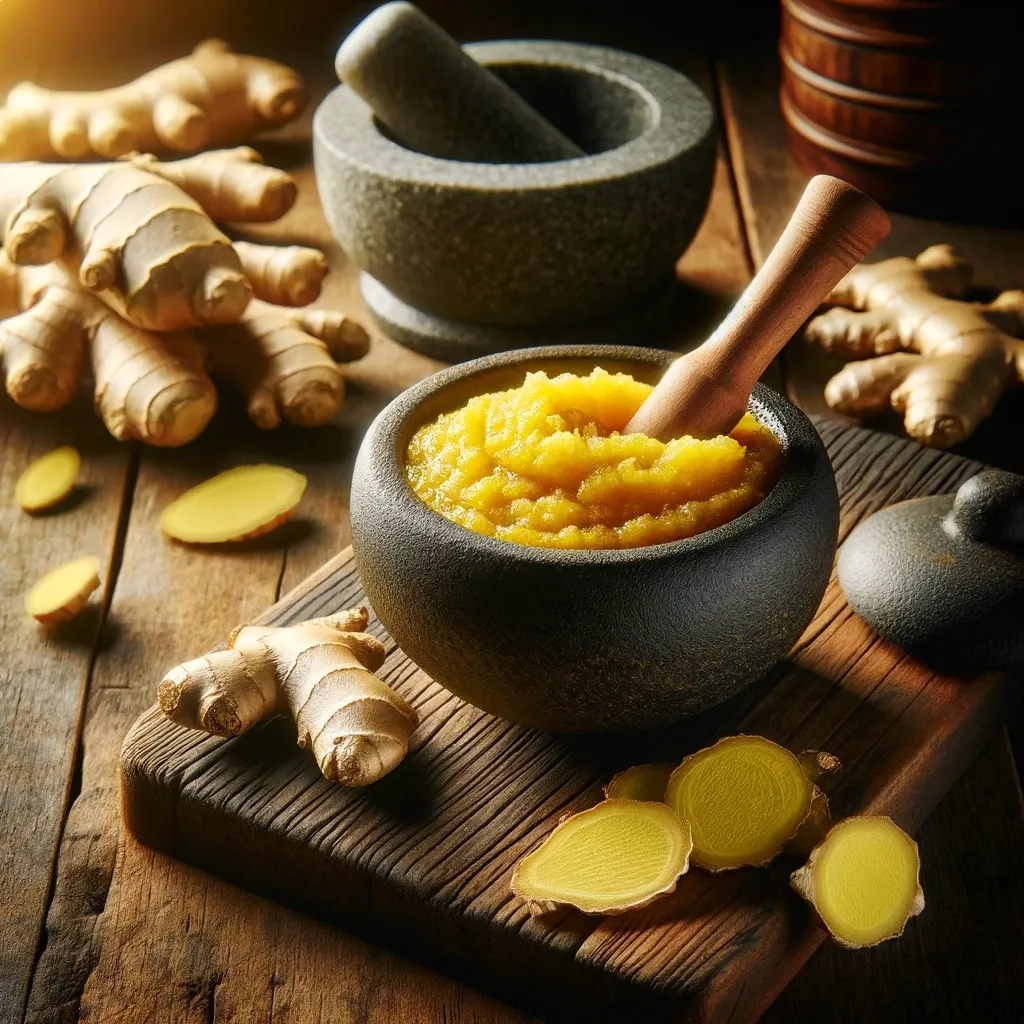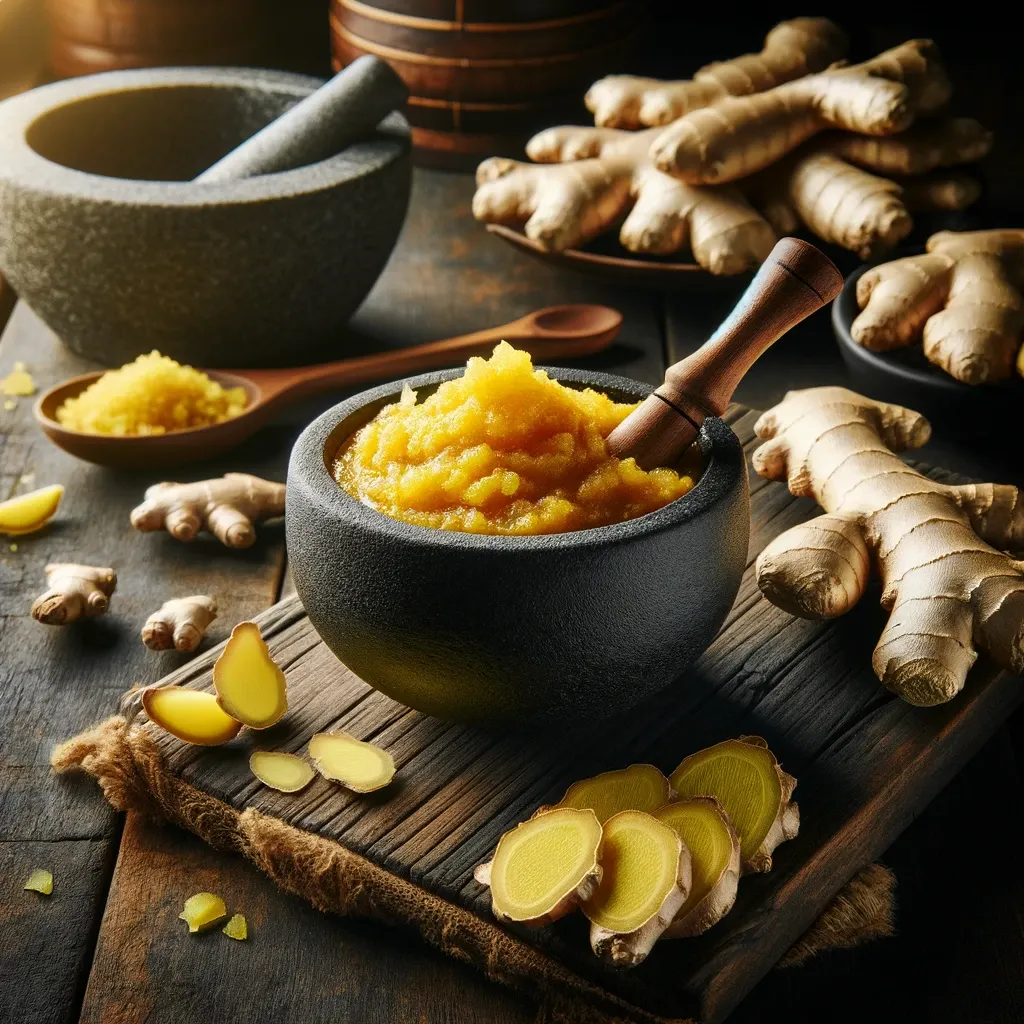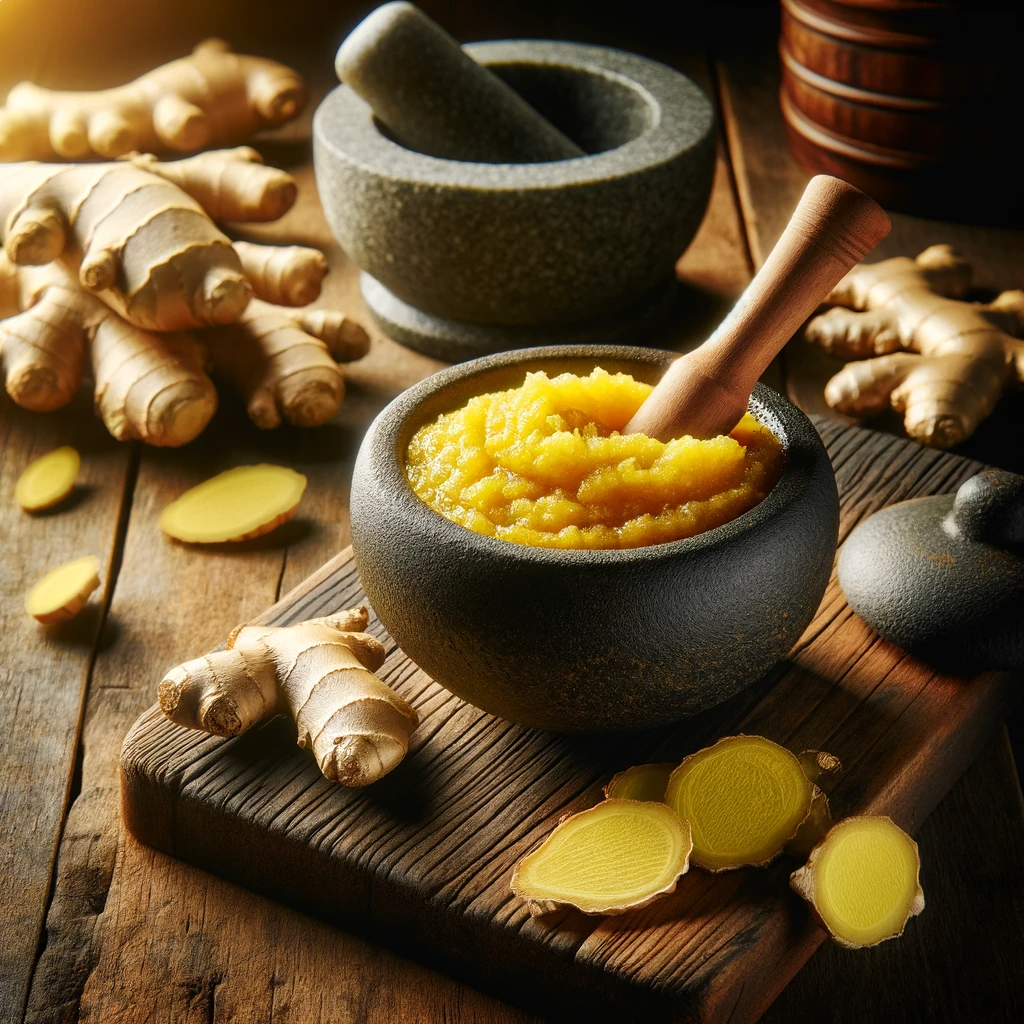Easy Ginger Paste
Ginger paste is simply a must for convenience if you use a lot of ginger in your cooking. It is made by finely mincing (or blending) fresh ginger root into a smooth, creamy paste; this form of ginger is favored for its ease of use and intense flavor.

Fresh ginger paste, known for its sharp, slightly spicy, and aromatic flavor, has a smooth, thick consistency that blends easily into marinades, sauces, and other mixtures; it can be made by peeling fresh ginger root and mincing it in a food processor or blender, with a bit of water or oil to aid in blending.
Why ginger paste?
If you’re using a lot of ginger in your cooking, ginger paste is highly recommended since it’s a massive time-saver and makes cooking with ginger much easier.
We advocate for making your ginger paste, and here’s why: it’s straightforward, fast to make, and the flavor is incomparably fresher and more intense than anything you’ll find pre-made at the store.
Though blending ginger and garlic into a combined paste is popular, we find it beneficial to keep ginger paste stored alone. Many recipes call for just ginger or garlic paste, and having them separate gives you more control over the flavor profiles in your dishes.
Choosing the right oil
We use oil to make ginger paste to help maintain its consistency. We typically use vegetable oil, but feel free to choose any neutral-flavored oil, like grapeseed, canola, or sunflower oil. The key here is to use an oil that doesn’t overshadow the ginger and that the ginger’s aromatic, spicy flavor isn’t affected by the oil.

For the preppers
If you’re in the business of meal-prepping and time-saving, check out our other paste recipe:
Versatility
We cannot overstate the versatility of ginger, and we find ourselves always reaching for our jar of ginger paste; here are some of the ways you can use your ginger paste;
- Marinades: Add ginger paste to marinades for meats, poultry, or fish to enhance flavor and tenderize.
- Stir-fries: Use ginger paste in stir-fry dishes for an aromatic and spicy touch.
- Sauces and gravies: Incorporate ginger paste into sauces and gravies for extra zing.
- Soups and stews: A small amount of ginger paste can elevate the flavor profile of soups and stews.
- Curries: Ginger paste is a staple in many curry recipes, adding depth and warmth.
- Baking: Use in baked goods like gingerbread, cookies, and cakes for a distinct ginger flavor.
- Salad dressings: Mix the ginger paste into salad dressings for a spicy kick.
- Teas and beverages: Ginger paste can be used to make ginger tea or added to smoothies.
Ginger also has a lot of health benefits, which is another reason why we always keep a jar of paste handy. Here are some of the ways we rely on ginger for relief;
- Digestive aid: Ginger is known to aid digestion and reduce nausea.
- Cold and flu relief: Use ginger paste in hot tea to help alleviate cold symptoms.
- Anti-inflammatory: Ginger has anti-inflammatory properties and can be used in home remedies for pain relief.
- Soothing sore throat: Ginger paste mixed with honey can help soothe a sore throat.
What's the recommended amount of ginger paste to use in cooking?
Typically, we substitute a small knob of ginger with one teaspoon of ginger paste. We even freeze it in one-teaspoon portions for convenience. Feel free to adjust the amount to suit your taste, such as using just ½ teaspoon.
What's the shelf life of ginger paste in the refrigerator?
The ginger paste remains fresh for about 10 days in the fridge if stored in an airtight jar. For those who make it in larger quantities, freezing it in ice cube trays is a great idea.
How long will ginger paste last if I freeze it?
In the freezer, ginger paste can be stored for up to 6 months, which is our preferred storage method. For ease of use, freeze the paste in an ice cube tray, and use one cube instead of one teaspoon of ginger paste.
Is peeling ginger necessary before making the paste?
It's up to your personal preference - we usually peel the ginger for our paste, but it's not a strict requirement.
What dishes can I use ginger paste in?
Ginger paste is so versatile, and it's typically used in curries, stir-fries, marinades, soups, and sauces.
Is ginger paste as healthy as fresh ginger?
Ginger paste has the same health benefits as fresh ginger; it's known for having anti-inflammatory properties and aiding digestion.
Easy Ginger Paste
We have a profound affection for the unique, zesty flavor of ginger, yet can't find the time to peel and mince it for each dish. To streamline our cooking, we've turned to making our own ginger paste.
Cuisine
Indian
Serves
30
Prep
10 mins
Cook
0 mins
Total
10 mins
Calories
7 kcal

Ingredients
7 ounces peeled ginger
1 teaspoon vegetable oil
Instructions
Rinse the ginger root under cold water to remove any dirt. Pat it dry with a clean towel.
Using a peeler or the edge of a spoon, peel the ginger root to remove the skin.
Cut the ginger into small pieces. This makes it easier to blend into a smooth paste.
Place the chopped ginger in a blender or food processor. Add the oil into the mixture as needed - the amount of liquid needed may vary depending on the moisture content of your ginger and the power of your blender.
Store your ginger paste in an airtight jar. If you’re freezing your ginger paste, freeze the paste in an ice cube tray (roughly 1 teaspoon for cube).
Notes
Save some time with peeling ginger: use a potato peeler to peel the skin off your ginger. To get to those hard-to-reach places, you can also use a teaspoon to scrape off the last bits of skin.
Nutrition
- Calories 7 kcal |
- Carbohydrate Content 1.2 g |
- Cholesterol Content 0 mg |
- Fat Content 0.2 g |
- Fiber Content 0.1 g |
- Protein Content 0.1 g |
- Serving Size 1 portion |
- Sodium Content 0.9 mg |
- Sugar Content 0.1 g |
About the author
Emma Donin is the culinary maestro behind this blog that serves as a melting pot of global cuisines and gastronomic adventures. Her culinary journey began in her grandmother's kitchen, where she learned the fundamentals of cooking and the importance of using fresh, quality ingredients.
